Articles Menu
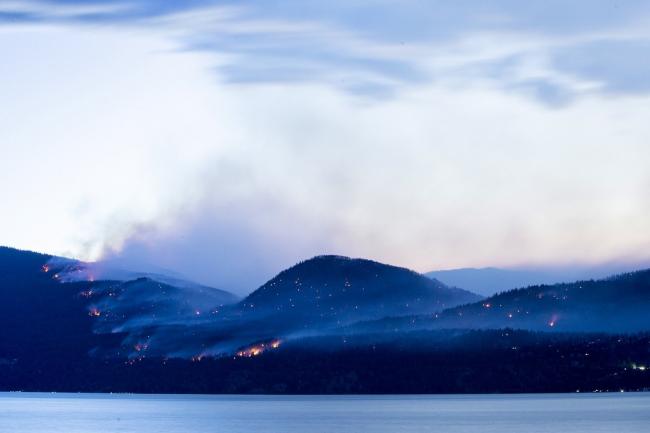
Feb. 7, 2022
Ten thousand years ago, when the last ice age gave way to the Holocene, a great migration was triggered in North America: trees began travelling northward, colonizing newly thawed landscapes at a pace of up to 500 metres a year. In a geoclimatic blink of an eye, trees colonized 38 per cent of the landmass now known as Canada, ultimately giving us nearly a 10th of all the forest in the world — more than any other country except Russia and Brazil.
Their leader was the black spruce, Canada’s most populous tree and the one that dominates the boreal, that band of wintry forest that encircles the globe just below the Arctic Circle and forms the Earth’s largest forest biome. A mosaic of peat bogs, lakes and mostly coniferous forest (interspersed with stands of cold-tolerant broadleafs like poplar, birch and trembling aspen), Canada’s portion of the boreal comprises almost a third of the world’s total. Viewed from above, it forms a lopsided green smile across the middle of the country’s face, stretching down from the Yukon’s Arctic Circle to wrap around the lower half of Hudson’s Bay before rising back up into northern Quebec and Newfoundland. Altogether, that’s three-quarters of Canada’s total forest area, storing more carbon than all the world’s recoverable oil reserves. The boreal dwarfs the seven other forest regions that took root further south, from the Great Lakes-St. Lawrence region that provides our maple syrup and spectacular autumn colours, to British Columbia’s prolific coastal rainforest.
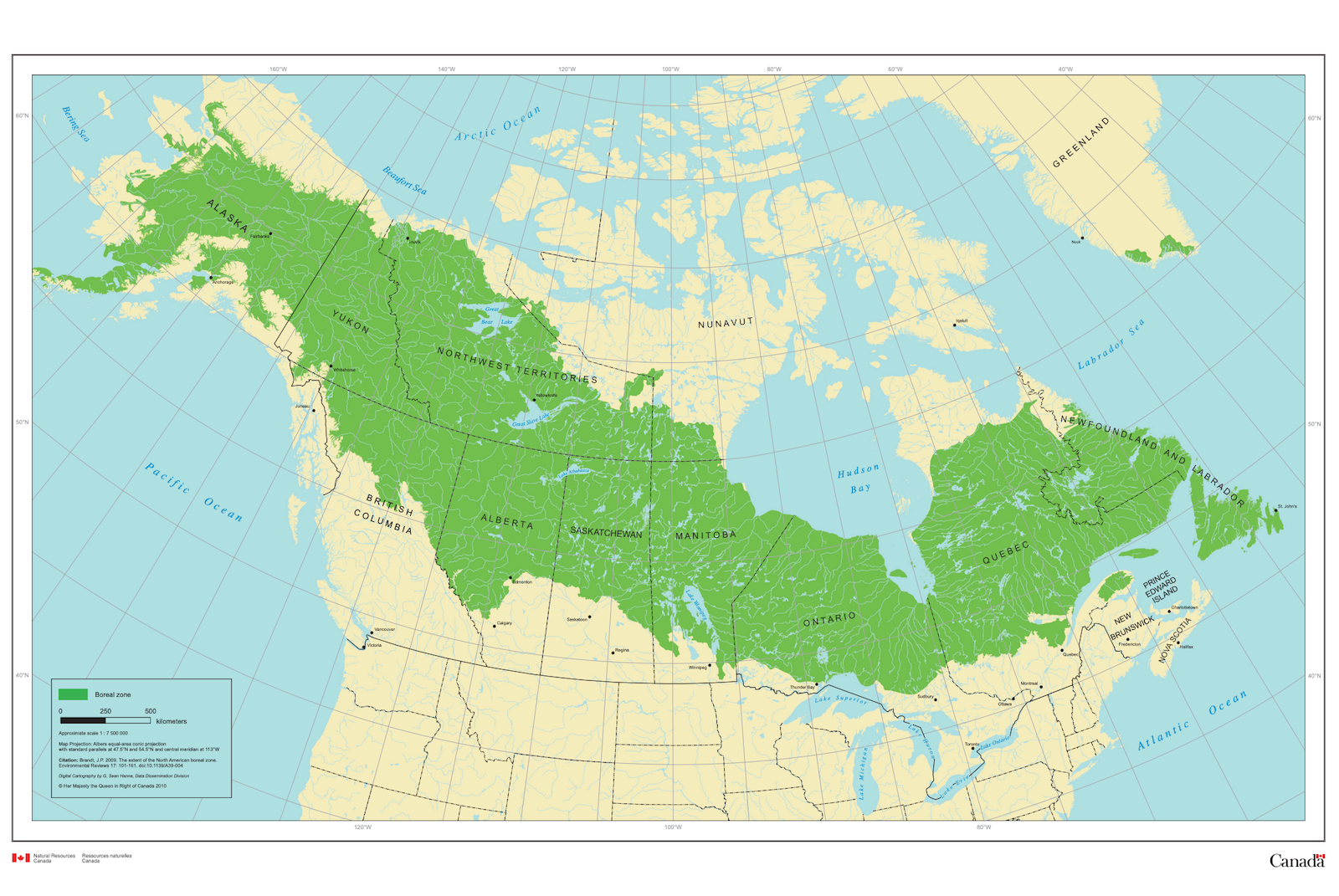
When paleoecologists started piecing this arrival story together in the middle of the 20th century, they were astounded — and confounded — by the speed of its advance. Models based on the observed dispersal of modern-day tree seeds predicted a far slower rate of travel. Apples just don’t fall that far from trees, and neither do pinecones. So how could the forest we see today have moved so far, so fast?
That conundrum, still not entirely resolved, is known as Reid’s Paradox, named after a British paleobotanist who studied the same phenomenon half a century earlier in Europe. Clement Reid found that his country’s most iconic tree — the oak — had shifted its range 1,000 kilometres to the north between the end of the last ice age and the Roman occupation of Britain. “This without external aid would take something like a million years,” he wrote in his 1899 book, The Origin of the British Flora. Of course, that statement suggests its own solution, and Reid posited it himself: birds and other seed-eating creatures provide plenty of external aid to tree migration. But even accounting for animal assistance, along with other facilitators ranging from rivers to tornados, the updated models developed by Reid’s North American successors could not explain the early Holocene’s breakneck pace of tree migration.
Ecologists now theorize that “cryptic refugia” must also have played a role: small groves of trees growing well outside their typical range, say in a valley surrounded by glaciers. When those glaciers melted, the refugia began populating their surroundings long before cousins showed up from the south.

Today, these theories are getting renewed attention. After 10,000 years of relative stability, the climate is heating up again — Canada’s permafrost line has already shifted 120 kilometres northward in the past 50 years. At those latitudes, however, it isn’t trees that spring up so much as shrubs. And with the Earth now warming 50 times faster than at the dawn of the Holocene, the forest isn’t marching north; it’s imploding from within, pummelled by drought, fire, pests and disease, whose impacts are all exacerbated by a logging industry that levels nearly 750,000 hectares of timber per year.
The resulting internal displacement has just begun. No one knows exactly how it will play out. The only certainty is that, once again, the forests of Canada are in need of external aid.
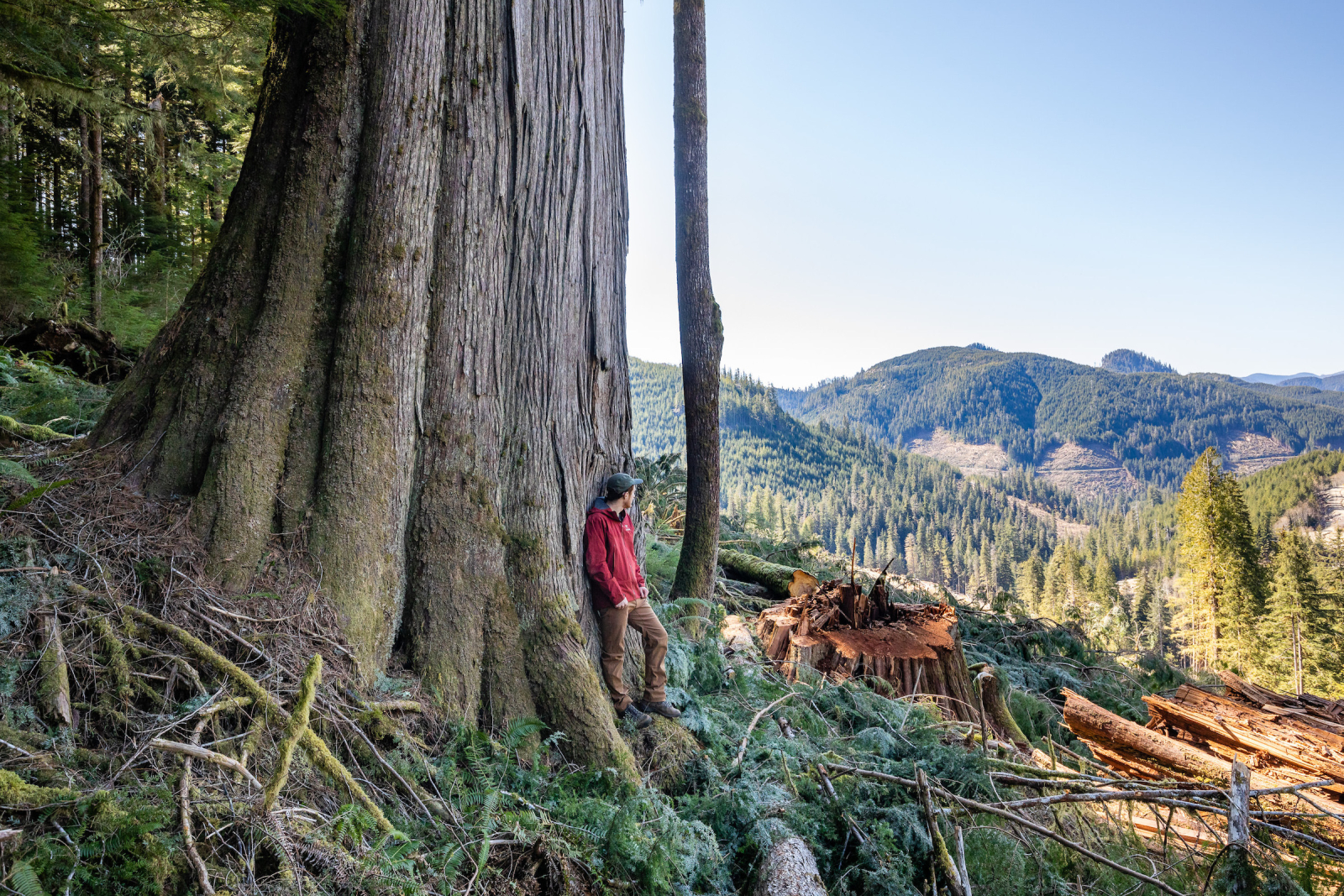
Humans have been managing these forests for as long as both have been here. Over the past century, that management has primarily taken the form of fire suppression and industrial forestry. About 65 per cent of Canada’s woods are now covered by some form of forestry tenure — essentially everything below the top third of the boreal, where the trees are smallest and hardest to reach. Even so, less than half a per cent of this country’s total forest area is logged in any given year.
Beyond simple assertions of scale, however, it’s hard to say much about Canada’s forest industry without triggering a cascade of caveats.
“Globally, if you ask me what’s the state of forestry in Canada according to world standards, we are pretty good,” says Christian Messier, Canada Research Chair in Forest Resilience to Global Change at the Université du Québec en Outaouais. Up until the 1980s, forests from coast to coast were razed with little regard for social or ecological consequence, but since then the industry has improved. Modern reforms include smaller clearcuts, selective (or partial) logging that leaves riparian zones intact, increased consultation with Indigenous communities and an overall shift to ecosystem-based management, whereby the impacts of logging are designed to mimic natural disturbances like fire and flood. “This is the intent,” says Messier. “Have we done that perfectly? No. We’re still quite far away from emulating natural disturbances. We don’t do a lot of partial cutting in the boreal forest, because it’s costly, and the timber quantity might not justify just taking a few trees.”
Still, despite gaps between theory and practice, Canada has managed to maintain its overall forest area, losing virtually no net canopy in the past 30 years, according to statistics kept by Natural Resources Canada. Not bad for the world’s second largest exporter of wood products, especially at a time when the planet is losing some five million hectares of tree cover a year, most of it in the tropics. In the Amazon basin alone, more than 450,000 square kilometres of rainforest have been obliterated since 1988. The secret to our success is that, unlike in the Amazon or the Congo, Canadian forestry companies replace every tree they log. That’s a big part of the reason why Canada leads the world in third-party certification of sustainable forest management: 75 per cent of the country’s managed forests are now independently certified, representing 36 per cent of the world’s total.
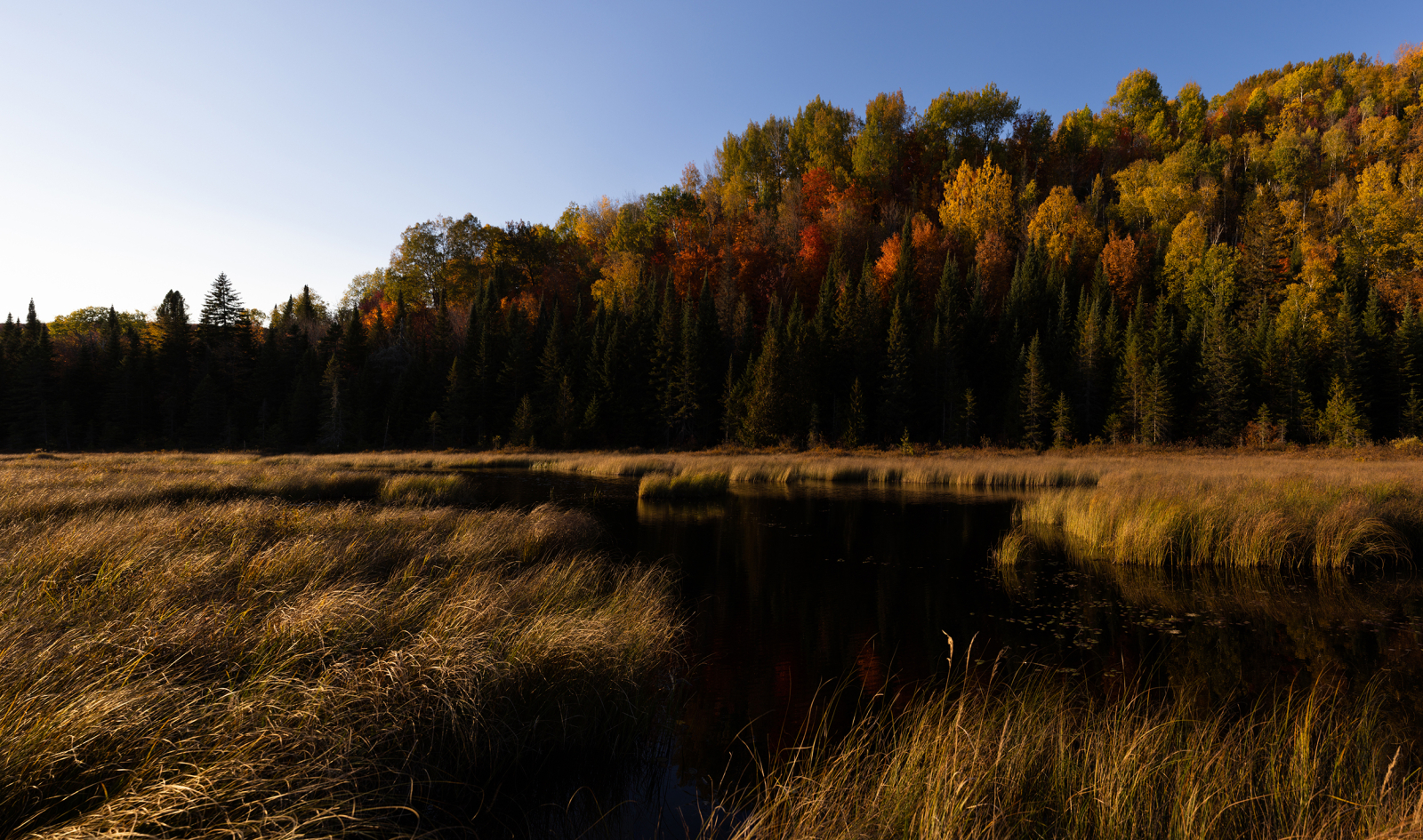
But these kinds of figures, frequently touted by both industry and government, conceal as much as they reveal.
Anthony Swift and Courtenay Lewis, two researchers with the Natural Resource Defense Council’s Canada program, point out that government agencies in Canada fail to distinguish between primary forest (which has never been logged) and forest that has been replanted, which amounts to a critical accounting error in carbon terms.
“Canada’s boreal forest is incredibly unique for its carbon storage,” says Lewis, noting that the region stores twice as much carbon per hectare as the Amazon thanks to the rich, peaty soils found only in the boreal. “So once you start to fragment and create roads in that forest, you start to change the constitution – from a climate perspective, you start to release a lot of that ancient carbon into the atmosphere, and you can’t just put that back in.”
Nor does a replanted forest necessarily regrow to the full extent that industry and government assume. Swift and Lewis point to a 2019 report by the Wildlands League, a Toronto-based non-profit, which conducted aerial surveys over 35,000 square kilometres of former clearcuts in northern Ontario; the report found that an average of 14 per cent of replanted land was rendered “barren” by industrial impacts like logging roads and slash piles. “That indicates a deforestation rate 50 times greater than Ontario reports to the federal government, and the federal government has been reporting internationally,” says Swift. And that, in turn, calls into question federal statistics claiming replanted forests absorb more carbon than logging operations emit.
Most of Canada’s various certification programs serve to further conceal the true extent of industry’s damage, say Lewis and Swift. “Companies and the government broadly use certification as a proxy for sustainability,” says Lewis, pointing out that most certification schemes require nothing more than for companies to obey the law. “But the issue isn’t are these companies breaking the law? It’s are they having sustainable policies that actually are able to safeguard climate-critical areas and allow species to survive?”
Citing the examples of continued old-growth logging in B.C., along with crashing caribou populations (which rely on primary-forest habitat), Lewis and Swift say the answer is a resounding “no.”

Forestry professor Christian Messier agrees. To him, the very practice supposedly keeping our forests intact — planting trees — has dramatically increased their vulnerability to climate change. “We are simplifying the forest,” Messier says, noting that most logged areas are replanted with just one or two commercially valuable species, with the seedlings placed tightly together. “Managed forests tend to be less diversified, more homogenized over large areas.” Not for nothing are many of the forest tenures in this country called “tree farm licences.”
Because this has been going on for decades, Messier estimates fully a quarter of the forests in Canada, including much of the southern boreal and almost all of British Columbia, have been effectively turned into tree farms. These dense, simplified forests become perfect targets for fire and pest infestations.
The results — compounded by decades of fire suppression that allowed fuel to build up to explosive levels — are already devastating. The average forest area burned annually by wildfire has doubled since the 1970s, and is now well over two million hectares, more than twice the area logged. But even that pales in comparison to the area hit by pest infestations — in 2018, the last year for which numbers are available, insects defoliated over 16 million hectares of forest, about 20 times the footprint of logging. That wasn’t the worst year on record, either; in 2007, pine beetles stripped the leaves off 10 million hectares of pine in B.C. alone.
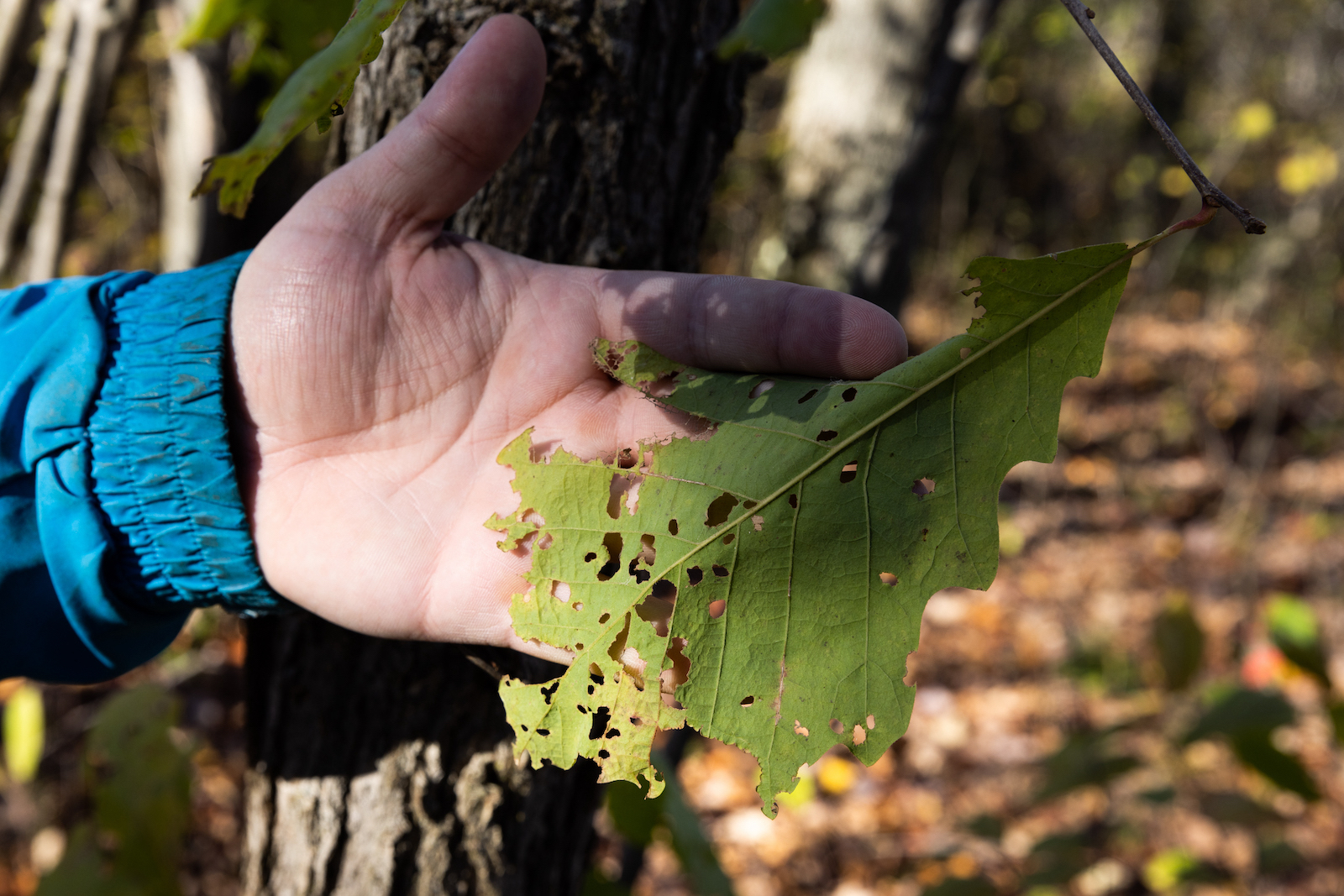
While fires are expected to double in scope by the end of this century, it’s the bugs that really worry Messier. “If we look at what is in the U.S. and moving toward Canada, there are around 25 to 30 insects and diseases that might arrive in the next 50 years.” Canada isn’t the only place becoming newly hospitable to a host of exotic pests. In 2019, the International Union for Conservation of Nature reported 42 per cent of the European Union’s tree species are at “high risk of extinction,” with invasive insects the No. 1 threat. While no comparable analysis exists for Canada, Messier feels the problem here is even worse. “If we keep doing what we are doing now,” he predicts, “at least half of our tree species are at risk of disappearing within 50 years, in any particular region of the country.”
Given the data, Prime Minister Justin Trudeau’s promise to plant two billion trees loses much of its lustre. For one thing, it’s unclear where all those trees would go. We already plant around half a billion trees a year in this country, and there isn’t much room for more. But even if he targets areas opened up by fire and disease, there’s no guarantee the trees planted won’t soon be destroyed themselves, thus incinerating their climate contribution.
This is already a major problem: Thanks to wildfires, pests and logging, forests in Canada have been emitting more carbon than they absorb for most of this century. In terms of the fight against climate change, trees are now frenemies at best.
Arguably, the most viable target for Trudeau’s tree-planting scheme is the place where over 80 per cent of our population lives: Cities. City planners across the country now recognize the role trees can play in providing free air conditioning to urban areas, and major urban centres are working to ramp up their tree cover. But even here one has to be strategic. The ash trees that make up about 20 per cent of the canopy in Montreal, Toronto and Ottawa are now all dying off because of a recent invasion by an Asian beetle called the emerald ash-borer.
If we knew what to expect in the coming decades, that would be one thing, “but with insects and pests, we have almost no idea” what’s coming, Messier says. “The only weapon we have against that is diversity.”

Rather than favouring one or two species of tree, Messier argues forest companies interested in their own long-term survival should start planting a diverse cross-section of species (a principle that Trudeau’s two-billion-tree program should honour wherever it chooses to put them). These should be selected not on the basis of current market conditions, but for resistance to drought, fire and pests. “Plantations that have more species are much more resilient to almost any kind of disturbance,” he says. “So the best insurance is to diversify with species that are very different. A bit like when you diversify your investments for retirement.”
Since it’s impossible to reshape three million square kilometres of forest, Messier has also begun collaborating with forestry companies to identify key regions in Ontario and Quebec where select stands of forest could be strategically seeded with a wide variety of tree species. The idea is that these could serve as cryptic refugia, so that when the inevitable disturbance arrives, one or two species might survive the onslaught and go on to repopulate the area.
“If you take a big area like the boreal forest, it will take maybe 100 years or 200 years to really change the whole forest, but you don’t need to. You just need to find key stands and really transform them. You vaccinate the forest against climate change.”
The struggle to protect forests reveals an uncomfortable truth: Trees aren’t going to get us out of our climate change mess, at least not in the short term. In carbon terms, they’re currently a liability, with B.C.’s forests alone producing more emissions in a bad fire year than production in Alberta’s oilpatch. As the boreal begins to melt and catch fire, the fuse to the world’s deadliest carbon bomb may already have been lit.
In other words, we’ve got to save forests before they can save us.

That means embracing micro-management, says Hugo Asselin, editor-in-chief of Ecoscience and a former Canada Research Chair in Aboriginal Forestry who now directs the Desjardins Chair in Small Community Development at the Université du Québec en Abitibi-Témiscamingue.
“We manage the forest at such a large scale that it becomes unmanageable,” says Asselin. “Here in Quebec, we have forest management units that are several hundred thousand hectares in size, sometimes up to one million hectares for one forest unit. So there is an engineer somewhere that is responsible for managing that forest management unit. Let’s imagine that you are looking at one million hectares of forest — can you do that? Well, that engineer, he or she can’t, either.”
Truly sustainable forestry, argues Asselin, requires detailed knowledge of a landscape, so that logging and any other industrial activities can be targeted to the most resilient areas while avoiding more fragile regions. That kind of approach takes care, but Asselin insists it doesn’t have to limit economic output. By way of example, he describes the 8,000-hectare research forest next to his university campus.
“When we set up that forest, the companies agreed to give us this piece of land, but they said, ‘You need to give us some wood,’” Asselin recalls. Today, they harvest 100 per cent of the expected wood on 75 per cent of the land, leaving a quarter of the forest untouched. “That’s because it’s small and we can make the right choices. We can decide that in one patch we will let the trees grow for 10 more years, and in another area instead of selling the trees for two by fours, we sell them for veneer wood. You have the time to make those phone calls and ask someone, ‘Would you need one van of very nice tamarack wood to make furniture? Because I have it.’ If you manage one million hectares, you don’t have time to make those phone calls. You just sell everything by the bulk price and then that’s it.”
Selling this vision to an environmental journalist is one thing; selling it to an industry geared to feed the global market is quite another. “It’s like the Titanic,” Asselin says, describing how policy-makers or forestry CEOs react to his suggestions. “They see the iceberg but they can’t steer away from it. So you have to find a solution where maybe they will make a little bit less money but not too much, so the investors will stay happy but the forest will be better managed.”
For all its size, Canada’s forest industry is little more than a microcosm of globalization. Even those who seem to be in charge are trapped by the same logic of scale and efficiency holding the whole world hostage. “Nobody can be totally against industry,” says Asselin. “We still need petroleum, we still need wood, we still need gold. But could we produce it in a more reasonable way?”

One person who has found a way to meld Asselin’s vision of locally managed forests with a management scheme more in keeping with the scale of this country is Valerie Courtois, the Innu director of the Indigenous Leadership Initiative and a forester by training.
“There’s a real opportunity here for Canada,” Courtois says from her home in Goose Bay, Labrador. “We’ve got a prime minister who’s committed to protect 25 per cent of the lands and oceans by 2025. The only way to achieve that is by supporting and facilitating Indigenous-led conservation and stewardship.”
Through the organization she heads, Courtois has become a lead negotiator for Indigenous Protected and Conserved Areas (IPCAs), sometimes known as Tribal Parks. In August, Courtois and the ILI scored a major victory when the federal government announced it would invest $340 million to support the creation of IPCAs, along with the Indigenous Guardian programs that serve as the equivalent of park rangers.
IPCAs, however, are not national parks. While environmental stewardship is a guiding principle, they don’t necessarily ban industry altogether. They are essentially co-management zones where Indigenous communities are at least on equal footing with provincial and federal authorities, with a say in where and how industry may proceed.
Every IPCA is unique in terms of size and governance structure, reflecting the disparate negotiations that go into each. The first was established in 1984 on Meares Island, in Clayoquot Sound, more as an act of defiance against old-growth logging than collaboration with the federal government. Since then, over 50 more have been proposed or established across the country. They range from the Ktunaxa Nation’s newly declared Qat’muk IPCA, covering 700 square kilometres in B.C.’s Purcell Mountains, to the Dene Tha’ First Nation’s proposal for the area surrounding the 426-square-kilometre Mbehcho (Bistcho) Lake in northern Alberta, to the Deline Dene Nation’s proposal for the 31,000-square-kilometre watershed of the Great Bear Lake in the Northwest Territories, to the Sayisi Dene First Nation’s proposal to turn northern Manitoba’s Seal River watershed — at 50,000 square kilometres, an area the size of Nova Scotia — into an IPCA. With forestry and mining interests moving aggressively northwards, these IPCAs are becoming a counterforce to the unchecked industrial expansion. “The Great Bear Lake proposal alone would protect the equivalent of nearly 25 years of Canada’s emissions,” Courtois says. “So those are not insignificant contributions. Canada wouldn’t be able to meet its (climate) targets any other way.”
It seems obvious that protecting huge swathes of Indigenous territory would be good for the environment and reconciliation alike. But forestry employs over 200,000 Canadians and contributes nearly $25 billion to our GDP. Mightn’t the widespread adoption of IPCAs threaten some of that prosperity?
Courtois’s response to that concern is that IPCAs are economically important to the Innu as well. “We don’t think of it as being somehow protected in its pristine-ness,” she explains. “We fundamentally believe that we need to interact with that forest. It makes us healthy and we make it healthy. So in some cases that includes industry. The problem is, for many Indigenous nations, we were never part of those conversations in the first place. What we’re really asking for is to have a way of shaping and ensuring that industry is doing things that allow us to be who we are in those places.
“There are places where the industrial footprint is too big. There are places where there is an incompatibility with conserving biodiversity and the level of harvest. That has to be acknowledged. We don’t know if it’s really that great a use of our forests to have them transformed into cheap toilet paper for the world. I think those are fair questions to ask.”
They are also difficult questions to answer. They strike at the heart of a reconciliation process that goes beyond non-Indigenous Canada’s reckoning with colonialism and straight to the heart of a conundrum that’s gone global: How can eight billion humans live well and sustainably on this planet? No society in the history of our species has come up with a solution to that problem, because no one has faced it until now.
Sometimes, the only way to approach a task of great magnitude is to break it into pieces. From that perspective, Canada’s forests may just be manageable after all.
[Top photo: The White Rock Lake wildfire west of Vernon, B.C., burned an area of more than 83,000 hectares last summer. Photo by Jesse Winter]